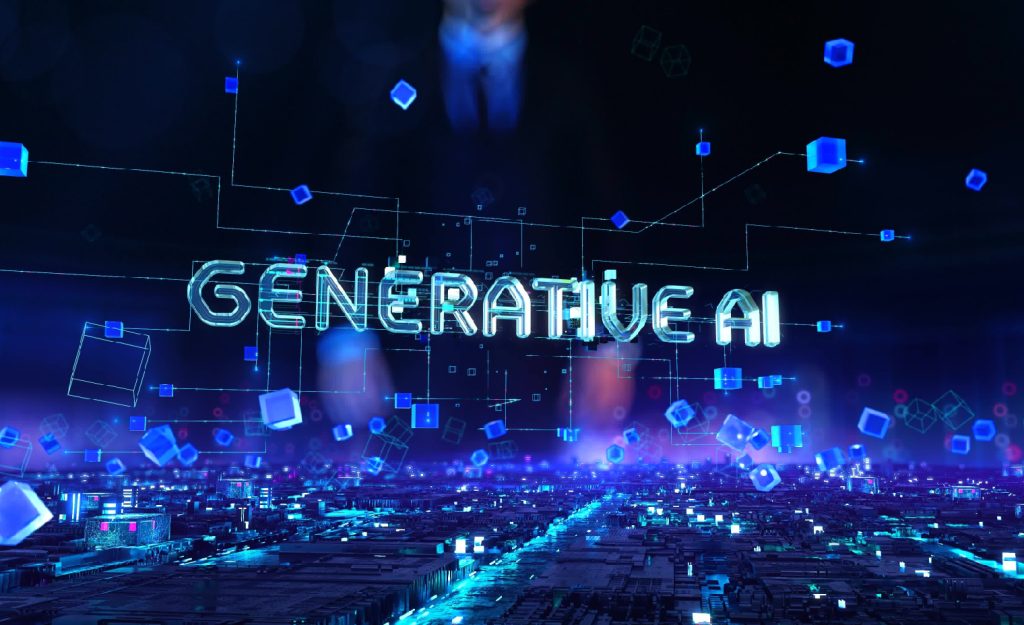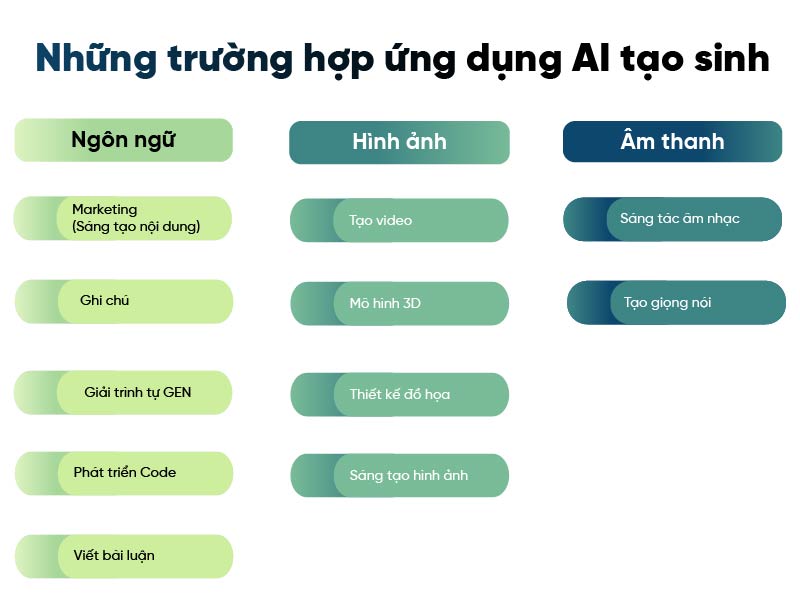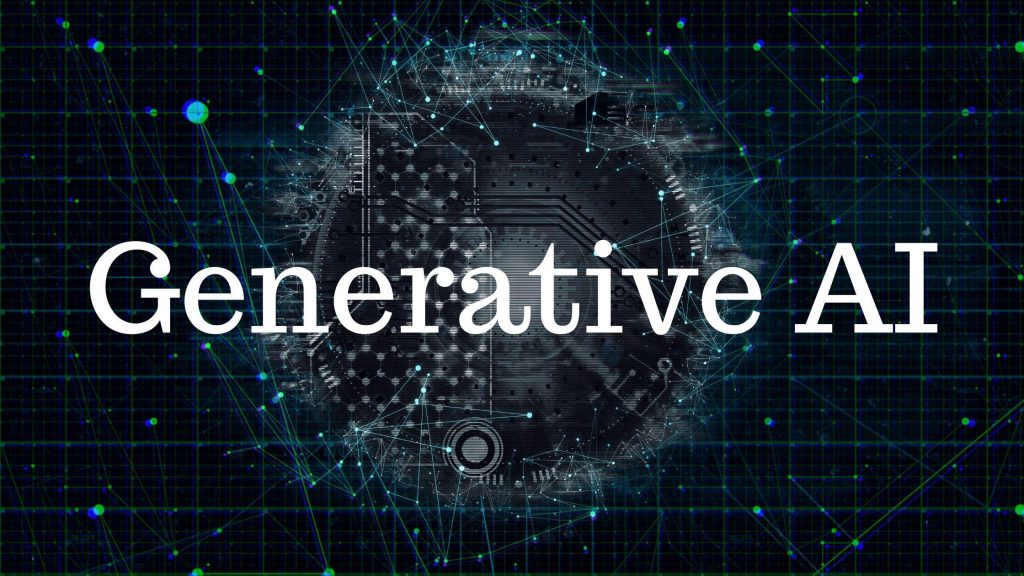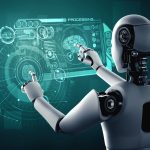Artificial Intelligence (AI) has been making significant strides in the field of technology, with its ability to automate tasks, predict outcomes and even mimic human behavior. However, there is a new player in town that is taking AI to the next level – Generative AI.
Generative AI is a term that has been gaining traction in recent years, but what exactly does it mean? In simple terms, it can be defined as the use of AI algorithms to generate new content based on various inputs. This includes text, images, audio, video, 3D models, and other types of data.
In this article, we will take a closer look at Generative AI, its history, how it works, and its various applications across different industries. We will also discuss the impact of Generative AI on society and its potential for future developments.
Generative AI: An Overview
Generative AI, also known as creative AI, is a branch of artificial intelligence that focuses on creating new content rather than analyzing existing data. It involves using machine learning algorithms to produce new and original data based on patterns and structures found in a set of input data.
One of the key features of generative AI is its ability to create content that is both unique and diverse. This means that the generated content is not just a replica of the input data, but rather a new creation with its own characteristics.
The concept of Generative AI is not entirely new; it has been around since the late 1950s. However, with recent advancements in technology and the availability of large datasets, it has gained more attention and has been applied to various industries.

Overview of the generative AI
History of Generative AI
Before we delve into the history of Generative AI, it is essential to understand its roots in two other significant branches of AI – Machine Learning (ML) and Deep Learning.
Machine Learning (ML)
Machine Learning is a branch of artificial intelligence that uses algorithms to analyze data, identify patterns, and make predictions. It was first introduced in the late 1950s, and since then, it has evolved significantly.
The earliest forms of generative AI can be traced back to ML algorithms that were used to generate new data. These algorithms would analyze existing data and produce new data based on the identified patterns. However, this process was limited to basic data types like numbers and symbols.
Deep Learning and Neural Networks
In the 2010s, with the availability of massive datasets and advances in computing power, deep learning and neural networks became popular. These technologies are inspired by the human brain, with interconnected cells called neurons that process and learn from data.
Deep learning and neural networks have revolutionized the field of AI, enabling it to tackle more complex tasks like image and speech recognition. This also paved the way for the emergence of Generative AI.
Generative AI
Generative AI was formally introduced in the 2010s, building upon the foundations of machine learning and deep learning. It uses a subset of deep learning models called Generative Adversarial Networks (GANs) and Variational Autoencoders (VAEs) to create new and diverse content.
GANs use two competing neural networks – a generator and a discriminator. The generator creates new data while the discriminator evaluates its authenticity. These networks work together to produce high-quality and realistic results. On the other hand, VAEs are more focused on learning the underlying structure of the input data and generating new samples based on that structure.
How does Generative AI Work?
Generative AI models use neural networks to analyze and identify patterns in existing data, which are then used to generate new content. The process of creating such models involves training them on massive and diverse datasets using unsupervised or semi-supervised learning methods.
Unsupervised Learning
In unsupervised learning, the model is given a dataset without any labels or predefined output. The goal is to find patterns and relationships within the data without any guidance. This method is particularly useful for generative AI as it allows the model to learn and create without any specific instructions.
Semi-supervised Learning
Semi-supervised learning, as the name suggests, uses both labeled and unlabeled data for training. This provides more context for the model to learn from and creates better results. However, it requires a significant amount of labeled data, which can be challenging to obtain in some cases.
Once the model is trained, it can then generate new content by identifying and combining patterns from the input data. The more diverse the training data, the more varied and creative the output will be.
Foundation Models
One of the recent developments in Generative AI is the introduction of foundation models. These are pre-trained models that have been trained on massive and diverse datasets, making them capable of performing multiple tasks, including generating new content.
The most prominent example of a foundation model is OpenAI’s GPT-3 (Generative Pre-trained Transformer). It was trained on over 45TB of data, making it one of the largest language models to date. GPT-3 has shown remarkable abilities in tasks like essay writing, code development, translation, and text generation.
Another notable foundation model is DALL·E (pronounced as “Doll-E”), developed by OpenAI. It can generate high-quality images from simple text descriptions, such as “a red chair in the shape of an octopus.” This model has immense potential in the field of graphic design and illustration.
Applications of Generative AI
Generative AI has a wide range of applications across various industries, including language, audio, image, and synthetic data generation. Let’s take a closer look at each of these fields.
Language
One of the primary applications of Generative AI is in the field of language generation. With the rise of foundation models like GPT-3, we have seen a significant shift in how we interact with AI. These models can generate human-like text, making it difficult to distinguish between machine-generated content and content written by humans.
Language Models (LMs) are also used for tasks like essay writing, code development, translation, and even generating fake news. However, they also raise concerns over the spread of misinformation and the ethical use of such technology.
Audio
Generative AI is also making strides in the audio industry, with its ability to create music, audio clips, and even generate sounds for videos. It can also mimic the voice of a specific person, making it useful for generating automated voiceovers or creating virtual assistants.
One of the most famous examples of generative audio is Jukebox, developed by OpenAI. It can compose original music in different genres, including pop, rock, and jazz. The generated music is so convincing that it is difficult to tell if it was composed by a machine or a human.
Image
The application of Generative AI in the field of image generation has been gaining a lot of attention in recent years. It has the ability to create 3D images, avatars, graphics, and illustrations. This technology has vast potential in the film and gaming industries, where realistic graphics are crucial.
In healthcare, Generative AI is being used to develop new drug discoveries by generating novel chemical compounds. It is also used in creating realistic images for virtual reality (VR) and augmented reality (AR) experiences.
Synthetic Data
One of the most significant challenges in training AI models is the availability of diverse and representative datasets. Generative AI has been used to overcome this challenge by creating synthetic data that can be used to train AI models.
Synthetic data is generated by feeding a generative model with existing data and then allowing it to create new samples. This not only saves time and resources but also ensures privacy and data security. It is particularly useful in fields like healthcare, where sensitive patient data is involved.

Applications of the Generate AI
Impact of Generative AI
Generative AI has immense potential in various industries and has already made significant contributions to fields like art, music, and design. However, like any other technology, it also raises concerns over its impact on society and ethical use.

Influence of Generative AI
Ethical Concerns
One of the biggest concerns surrounding Generative AI is the potential for misuse. With the ability to generate human-like text and images, it can be used to spread misinformation, fake news, and even impersonate individuals. There are also concerns over the impact of such technology on jobs, as it can automate tasks that were previously done by humans.
These ethical concerns have raised questions about the regulation and control of Generative AI to ensure its responsible use. This requires transparency from developers and stricter regulations from governing bodies.
Bias and Fairness
Another issue that arises with Generative AI is the possibility of bias and lack of fairness in the generated content. The models are trained on existing data, which may contain biases, resulting in discriminatory or offensive output. This highlights the need for diversity and inclusivity in the training data to prevent such issues.
Intellectual Property Rights
With the rise of foundation models, there is also a debate around intellectual property rights. Who owns the content generated by these models? Is it the creators of the model, the users, or the people whose data was used to train the model? These are essential questions that need to be addressed to ensure fair use and prevention of plagiarism.
Conclusion
Generative AI is a new and innovative technology that has the potential to revolutionize various industries. Its ability to generate diverse and creative content has already made a significant impact in fields like art, music, and design.
However, with this power comes ethical concerns that need to be addressed to ensure responsible use. As we continue to explore the possibilities of Generative AI, it is crucial to have strict regulations and guidelines to prevent its misuse.
As with any technology, the future of Generative AI will depend on how we use it and the measures taken to mitigate its potential risks. It is an exciting time for this rapidly evolving field, and we can expect to see more developments and advancements in the years to come.


